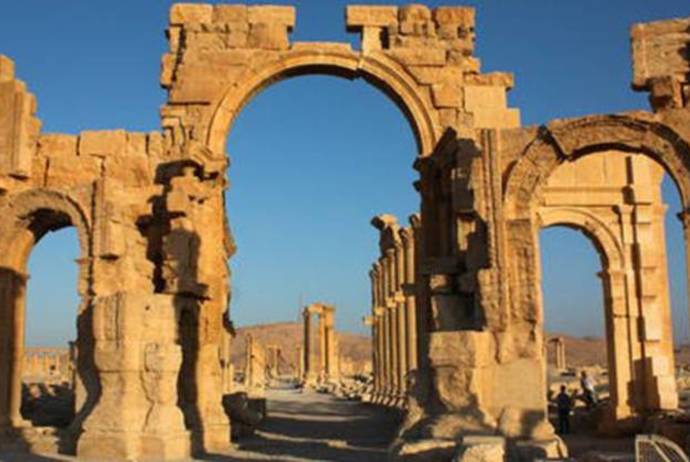ROME -- The world's first ever international task force of 31 civilian art rescue experts known as the United Nations "Blue Helmets for Culture", or Caschi Blu della Cultura, were graduated April 29 in Rome after completing a unique month-long training course.
The architects, restorers, art historians, and archeologists in the task force, who are working with another 30 highly specialized Carabinieri police, are the pioneers in Italy's first international training center, being created to protect the world cultural heritage. Their first task will be in Palmyria in Syria, where they will begin to address the wanton devastation by ISIS of ancient temples, towers, and a Roman triumphal arch.
"These experts - all volunteers - will be working under terribly tough conditions," said Brigadier General Mariano Mossa, commander of the Carabinieri charged with protecting Italy's cultural heritage. "They must not become targets for vendetta." For this reason neither their names or photographs are released. "Anyone who tends to the cultural heritage, representing the public administration, does not do it for money. It's the work itself that is enriching," said one of the volunteers. "In our sector, passion and the spirit of service on behalf of the community are what matters -- the sense of knowing that we are contributing to help recreate the cultural identity of a people stricken by calamity."
The conclusion of their training course was hailed in a ceremony in Rome with the participation of Culture Minister Dario Franceschini, the national head of the paramilitary Carabinieri General Tullio Del Sette, Premier Matteo Renzi, and Education Minister Stefania Giannini. The project was born out of a meeting at the Expo world fair in Milan last August, at which 80 culture ministers signed a "Declaration for the defense of the artistic, historical and archaeological heritage threatened with destruction." Then, speaking at the UN last September, Renzi made a formal proposal to UNESCO's executive council for the creation of the task force to be called Unite4Heritage.
As a result, the project was formally underwritten and signed last Feb. 16. "Men and women with long experience and professionalism are now ready to take on roles in the international arena under the guidance of the UN for protection of the world cultural heritage." Renzi declared at the ceremony, which was held inside Rome's ancient Baths of Diocletian. its goal is to address cultural heritage crises caused by natural disasters as well as by war, to provide technical supervision and training to local national staff of countries in conflict, and to assist in the òtransfer of movable heritage to safer zones. (See: Lynda Albertson of ARCA's )
Future funding and a designation of permanent headquarters for training are to be provided by the Italian government, with technical assistance from UNESCO. This week's successful conclusion of preparations for the first group to begin functioning in the field "confirms to just what extent our country is a great cultural power," said Renzi.
Italy's Carabinieri art squad, based in Rome, has a long experience in heritage protection. It has already dispatched its experts to Afghanistan and Nepal, among other foreign nations, as well as to quake-stricken areas closer to home, including in the Abruzzo mountain region. In cooperation with American police, they have also organized the repatriation of stolen Italian art treasures which had arrived in the U.S. illegally.
Candidates for the new task force were trained at Turin in the Campus of the United Nations there, in Leghorn (Livorno), Pisa and Rome under Carabinieri specialists and experts, including for book and archival restoration, drawn from such famed art restoration institutes as the Opificio delle Pietre Dure in Florence.






































